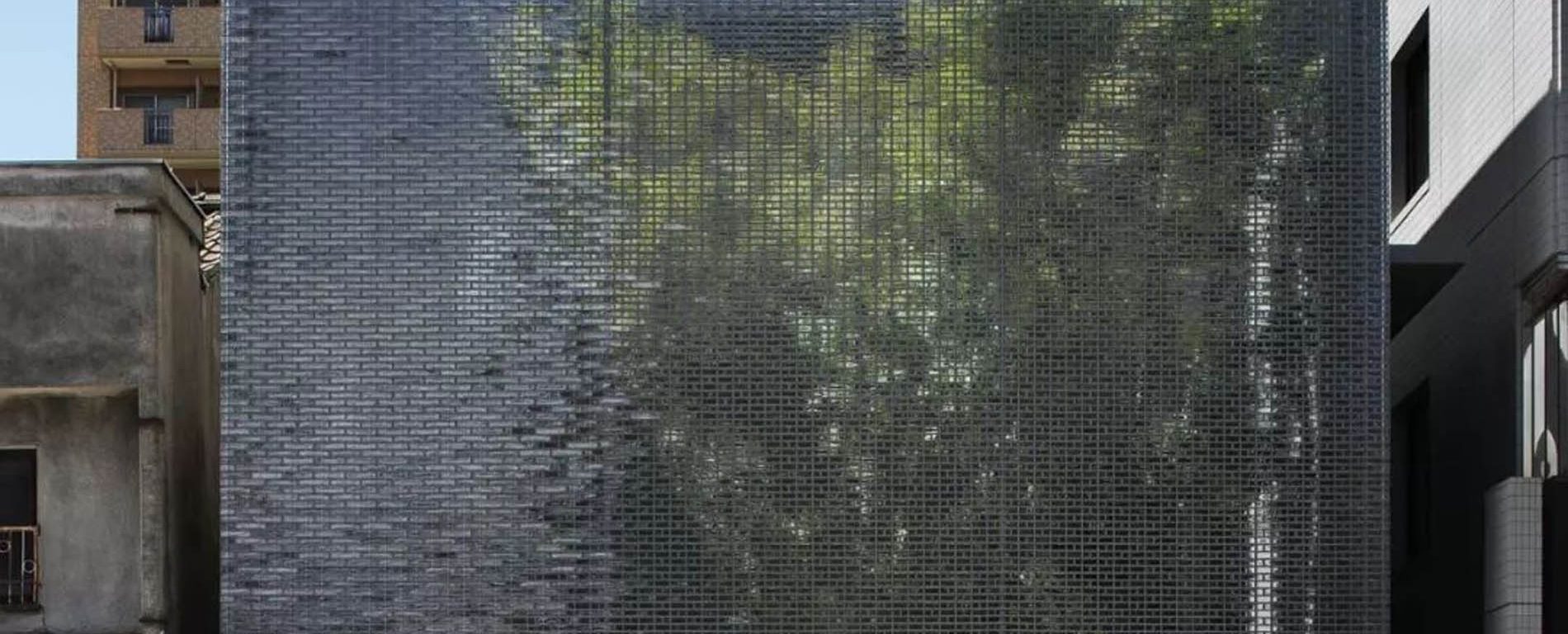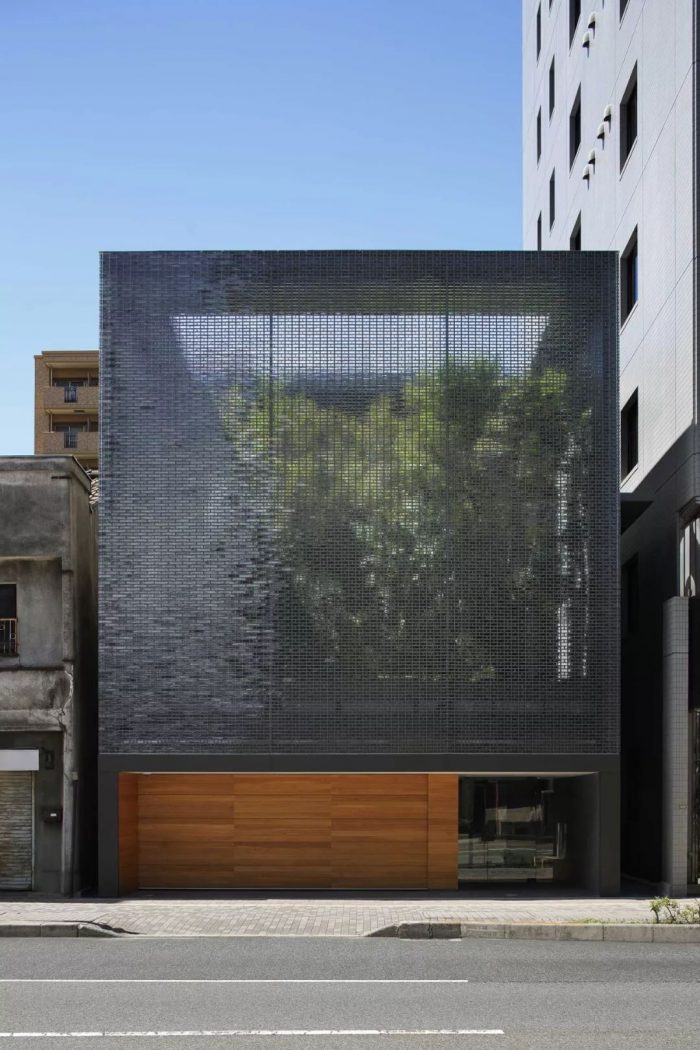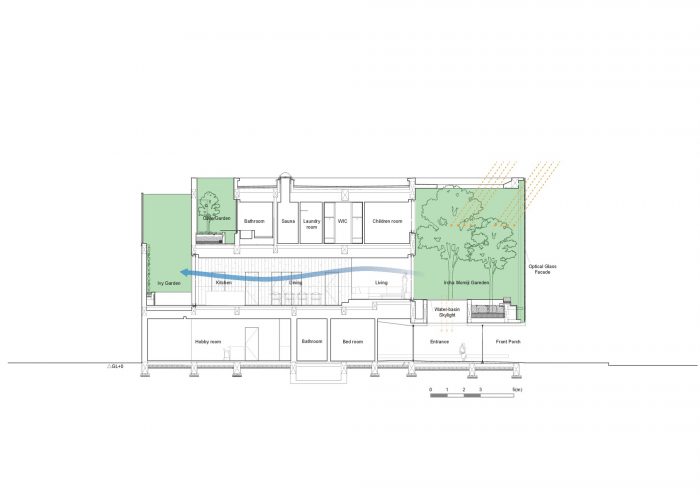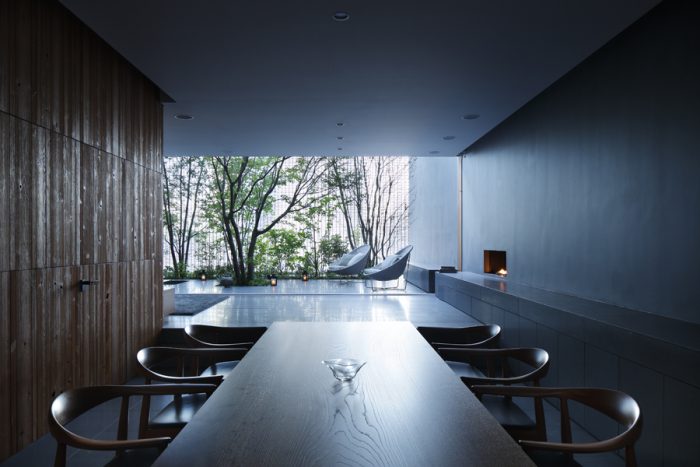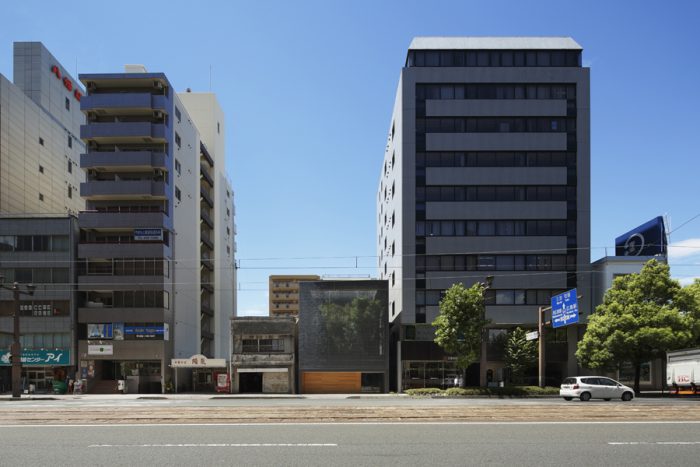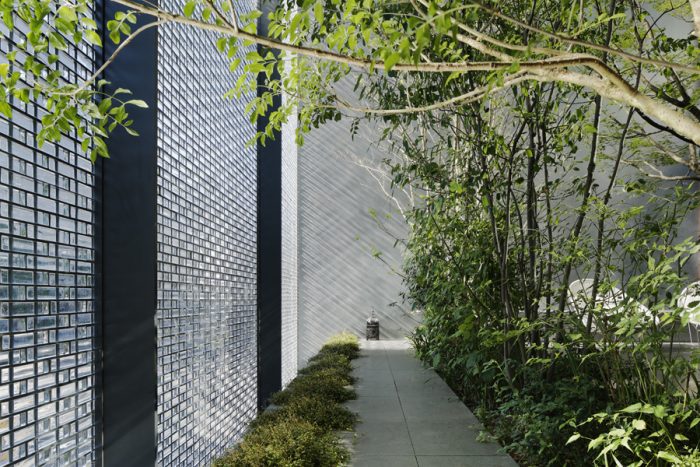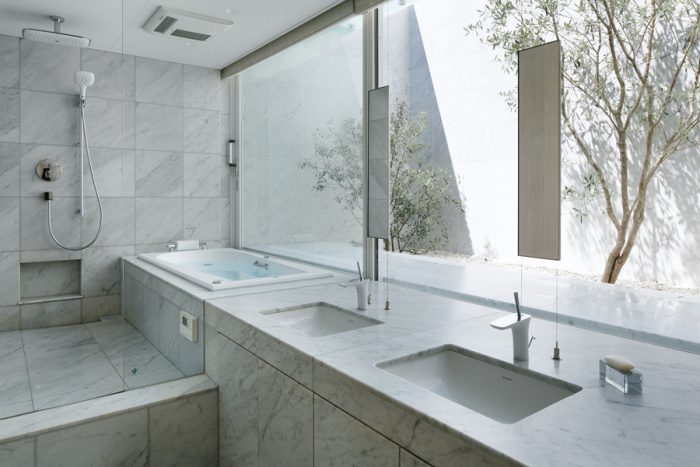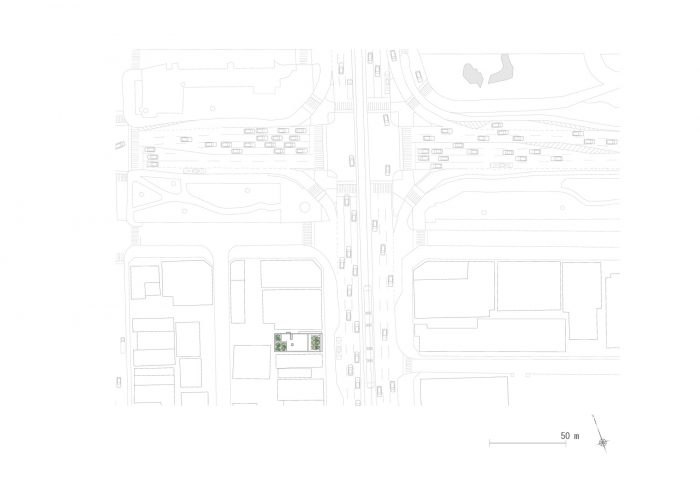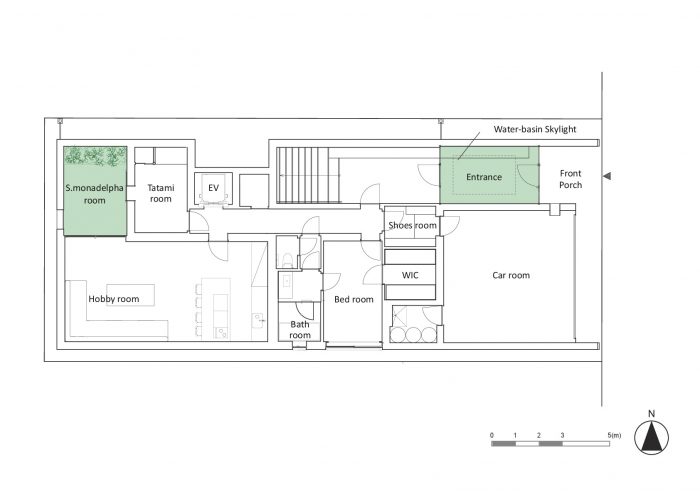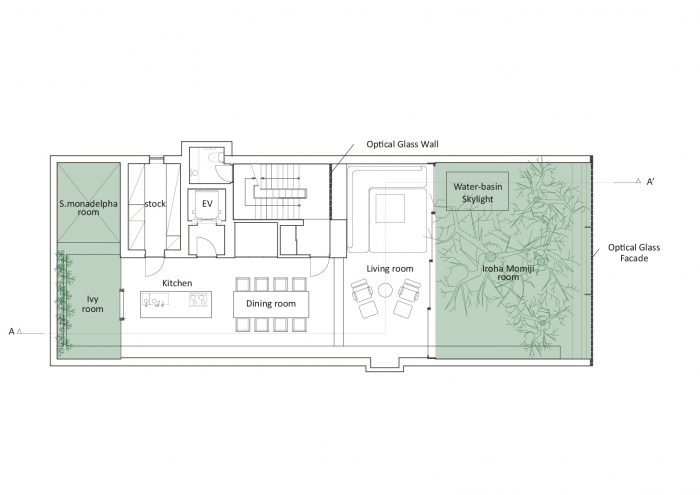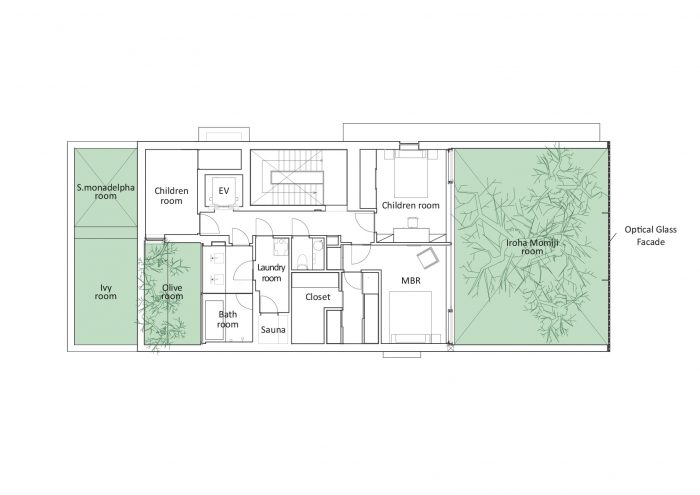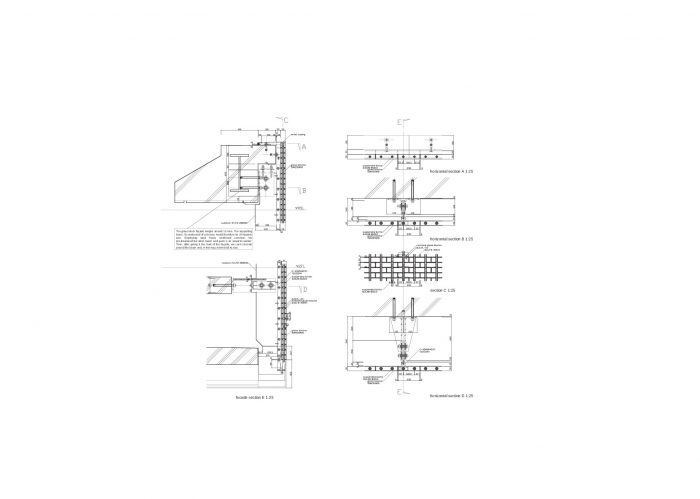这栋房子位于广岛市中心的高楼大厦之间,俯瞰着车水马龙的街道。为了在这种环境中获得私密性和宁静,我们在房子的街道一侧设置了花园和光学玻璃幕墙。从所有的房间都可以看到花园,过往的汽车和电车的宁静无声的景色给房子的生活增添了丰富的色彩。来自东方的阳光,透过玻璃折射,形成美丽的光影图案。雨水打在水盆天窗上,在玄关地板上呈现出水纹。透过花园树木的过滤光在客厅地板上闪烁,超轻量级的溅射涂层金属窗帘在风中舞动。虽然位于城市的中心地带,但随着时间的流逝,住户可以享受到光影和城市情绪的变化,生活在四季变化的意识中。
This house is sited among tall buildings in downtown Hiroshima, overlooking a street with many passing cars and trams. To obtain privacy and tranquility in these surroundings, we placed a garden and optical glass façade on the street side of the house. The garden is visible from all rooms, and the serene soundless scenery of the passing cars and trams imparts richness to life in the house. Sunlight from the east, refracting through the glass, creates beautiful light patterns. Rain striking the water-basin skylight manifests water patterns on the entrance floor. Filtered light through the garden trees flickers on the living room floor, and a super lightweight curtain of sputter-coated metal dances in the wind. Although located downtown in a city, the house enables residents to enjoy the changing light and city moods, as the day passes, and live in awareness of the changing seasons.
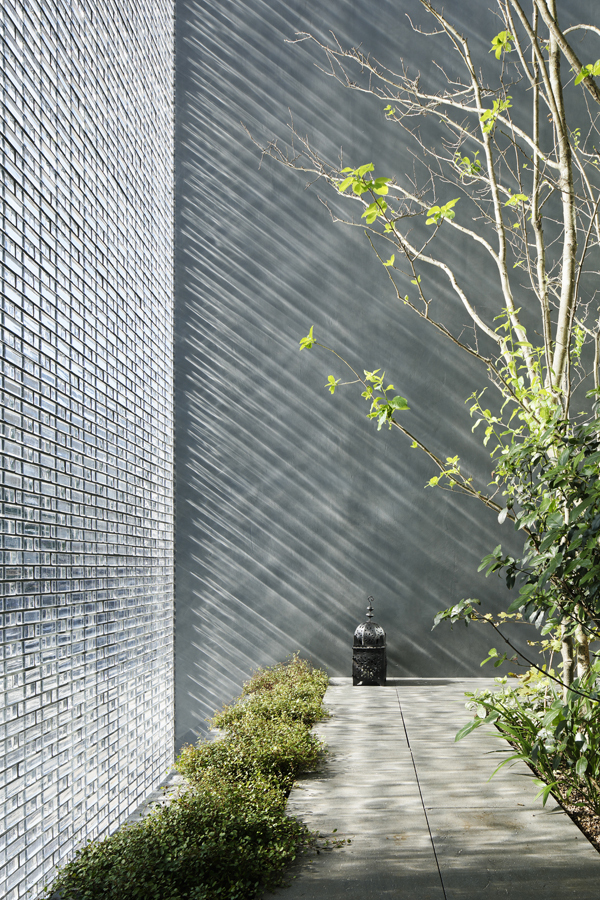
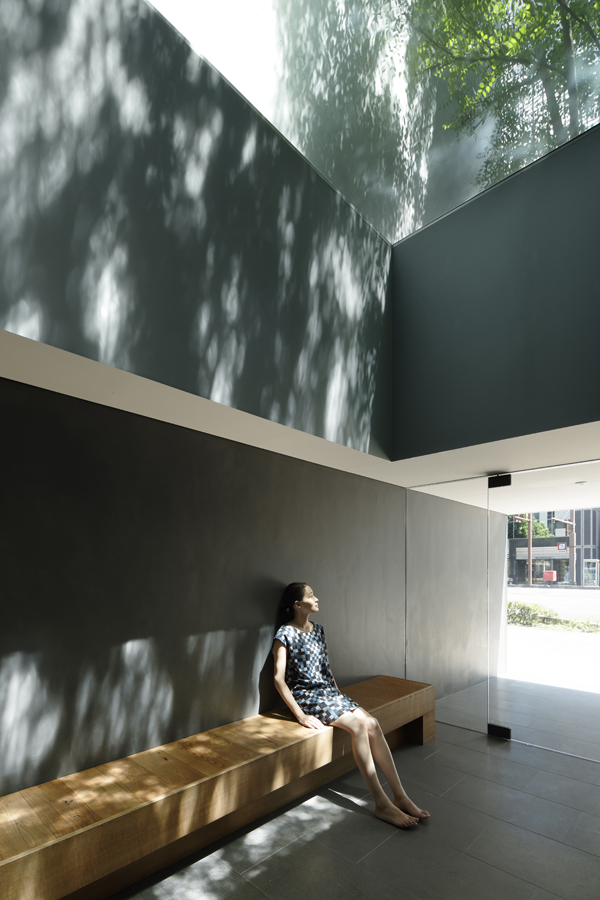
光学玻璃幕墙
外立面采用了约6,000块纯玻璃砖(50mm x 235mm x 50mm)。纯玻璃砖的单位面积大,能有效地隔绝声音,并能创造出一个开放的、清晰衔接的花园,让城市的风景尽收眼底。为了实现这样的立面,我们采用了玻璃铸造技术,用硼硅酸盐(光学玻璃的原材料)生产透明度极高的玻璃。铸造过程非常困难,既需要缓慢的冷却以消除玻璃内部的残余应力,又需要高尺寸精度。然而,即使如此,玻璃表面仍有微细的凹凸不平,但我们积极地欢迎这种效果,因为它将在内部空间产生意想不到的光学幻觉。
Optical Glass Façade
A façade of some 6,000 pure-glass blocks (50mm x 235mm x 50mm) was employed. The pure-glass blocks, with their large mass-per-unit area, effectively shut out sound and enable the creation of an open, clearly articulated garden that admits the city scenery. To realize such a façade, glass casting was employed to produce glass of extremely high transparency from borosilicate, the raw material for optical glass. The casting process was exceedingly difficult, for it required both slow cooling to remove residual stress from within the glass, and high dimensional accuracy. Even then, however, the glass retained micro-level surface asperities, but we actively welcomed this effect, for it would produce unexpected optical illusions in the interior space.
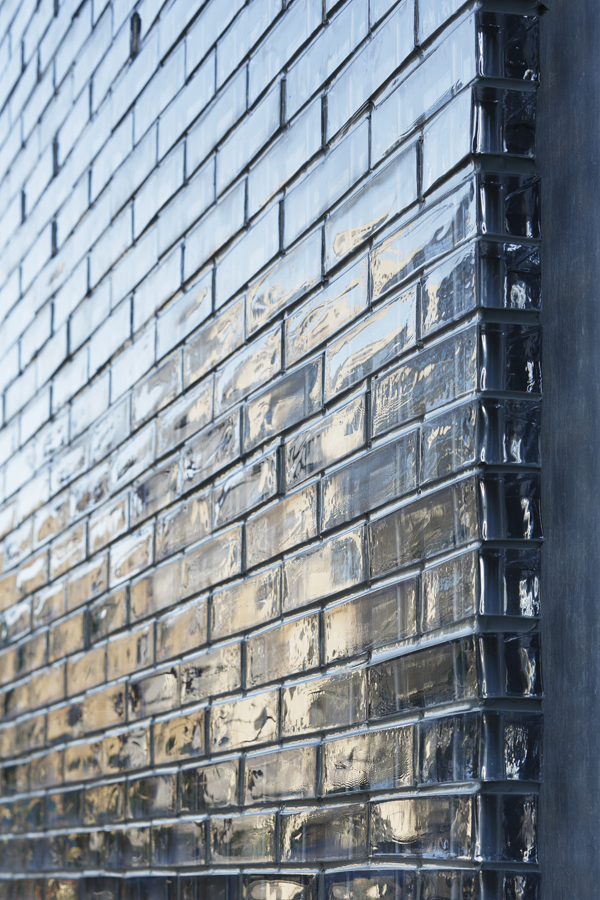
瀑布
8.6米×8.6米的外墙如此之大,如果用一排排仅50毫米深的玻璃砖来建造,它是无法独立存在的。因此,我们在玻璃砖上打孔,并将它们串在75个不锈钢螺栓上,悬挂在外墙上方的梁上。然而,这样的结构很容易受到侧向应力的影响,因此在使用玻璃砖的同时,我们还将不锈钢扁条(40mm x 4mm)以10厘米的间距串联起来。扁条就座在50mm厚的玻璃砖内,使其不可见,从而实现了玻璃砖之间6mm的均匀密封连接。其结果是–从花园或街道上看,都是一个透明的立面。外立面看起来就像一个向下流动的瀑布,散射着光线,使空气中充满了新鲜感。
Waterfall
So large was the 8.6m x 8.6m façade, it could not stand independently if constructed by laying rows of glass blocks a mere 50mm deep. We therefore punctured the glass blocks with holes and strung them on 75 stainless steel bolts suspended from the beam above the façade. Such a structure would be vulnerable to lateral stress, however, so along with the glass blocks, we also strung on stainless steel flat bars (40mm x 4mm) at 10 centimeter intervals. The flat bar is seated within the 50mm-thick glass block to render it invisible, and thus a uniform 6mm sealing joint between the glass blocks was achieved. The result —a transparent façade when seen from either the garden or the street. The façade appears like a waterfall flowing downward, scattering light and filling the air with freshness.
玻璃砖外墙重约13吨。因此,如果用混凝土建造,支撑梁将是巨大的。我们采用钢架钢筋混凝土,对钢梁进行了预紧,并使其向上倾斜。然后,在赋予其外墙的荷载后,我们在梁的周围浇筑混凝土,这样,就将其尺寸降到了最低。
The glass block façade weighs around 13 tons. The supporting beam, if constructed of concrete, would therefore be of massive size. Employing steel frame reinforced concrete, we pre-tensioned the steel beam and gave it an upward camber. Then, after giving it the load of the façade, we cast concrete around the beam and, in this way, minimized its size.
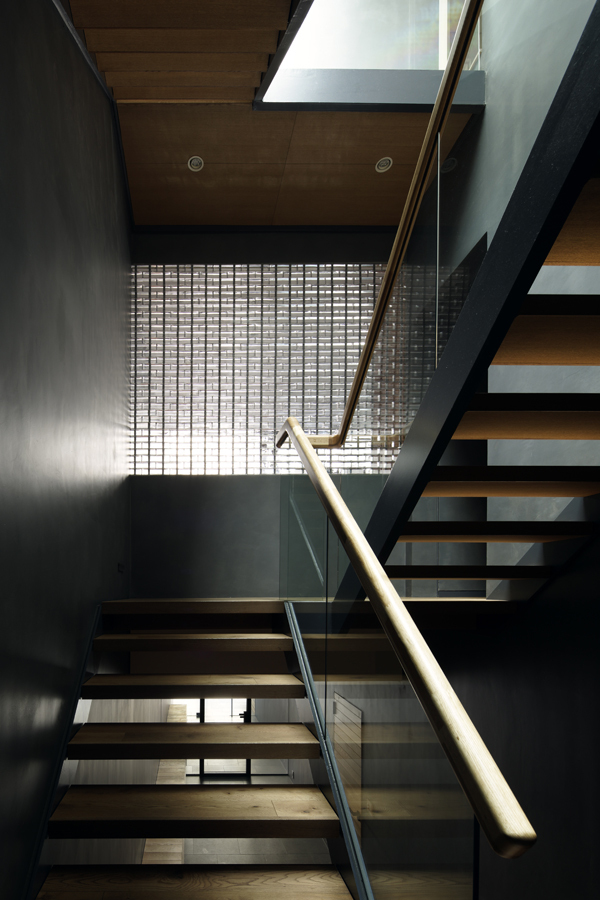



建筑师:Hiroshi Nakamura & NAP
面积: 385 m²
年份:2012年
照片:Koji Fuji / Nacasa & Partners Inc
制造商:EQUITONE
结构设计:Yasushi Moribe
纺织品协调:Yoko Ando
城市:广岛
国家:日本
Architects: Hiroshi Nakamura & NAP
Area: 385 m²
Year: 2012
Photographs: Koji Fuji / Nacasa & Partners Inc
Manufacturers: EQUITONE
Structure Design:Yasushi Moribe
Textile Coordination:Yoko Ando
City:Hiroshima
Country:Japan

